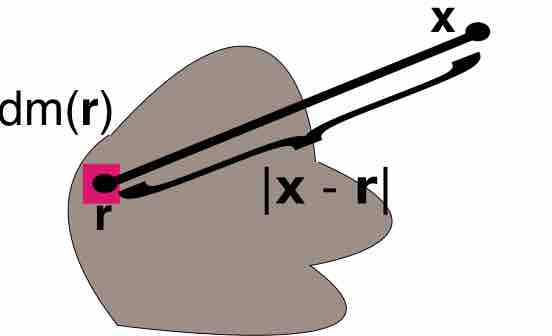As is the case with one variable, one can use the multiple integral to find the average of a function over a given set. Given a set
where
Example 1
In mechanics, the moment of inertia is calculated as the volume integral (triple integral) of the density weighed with the square of the distance from the axis:
Example 2
The gravitational potential associated with a mass distribution given by a mass measure
If there is a continuous function

A Mass to be Integrated
Points
Example 3
In electromagnetism, Maxwell's equations can be written using multiple integrals to calculate the total magnetic and electric fields. In the following example, the electric field produced by a distribution of charges given by the volume charge density
This can also be written as an integral with respect to a signed measure representing the charge distribution.